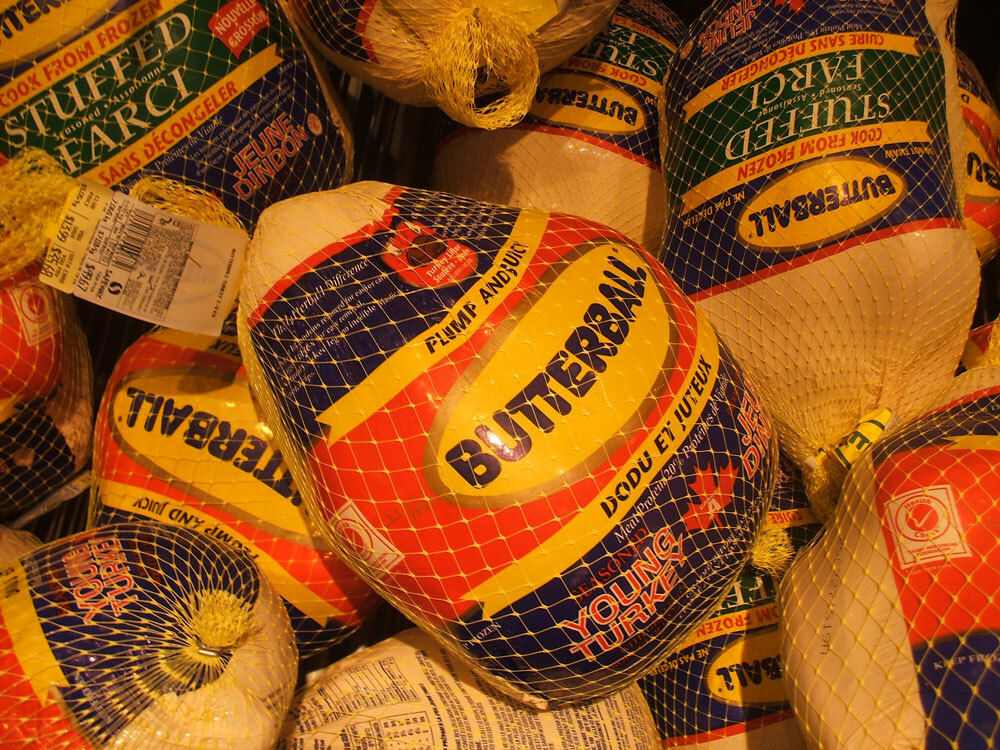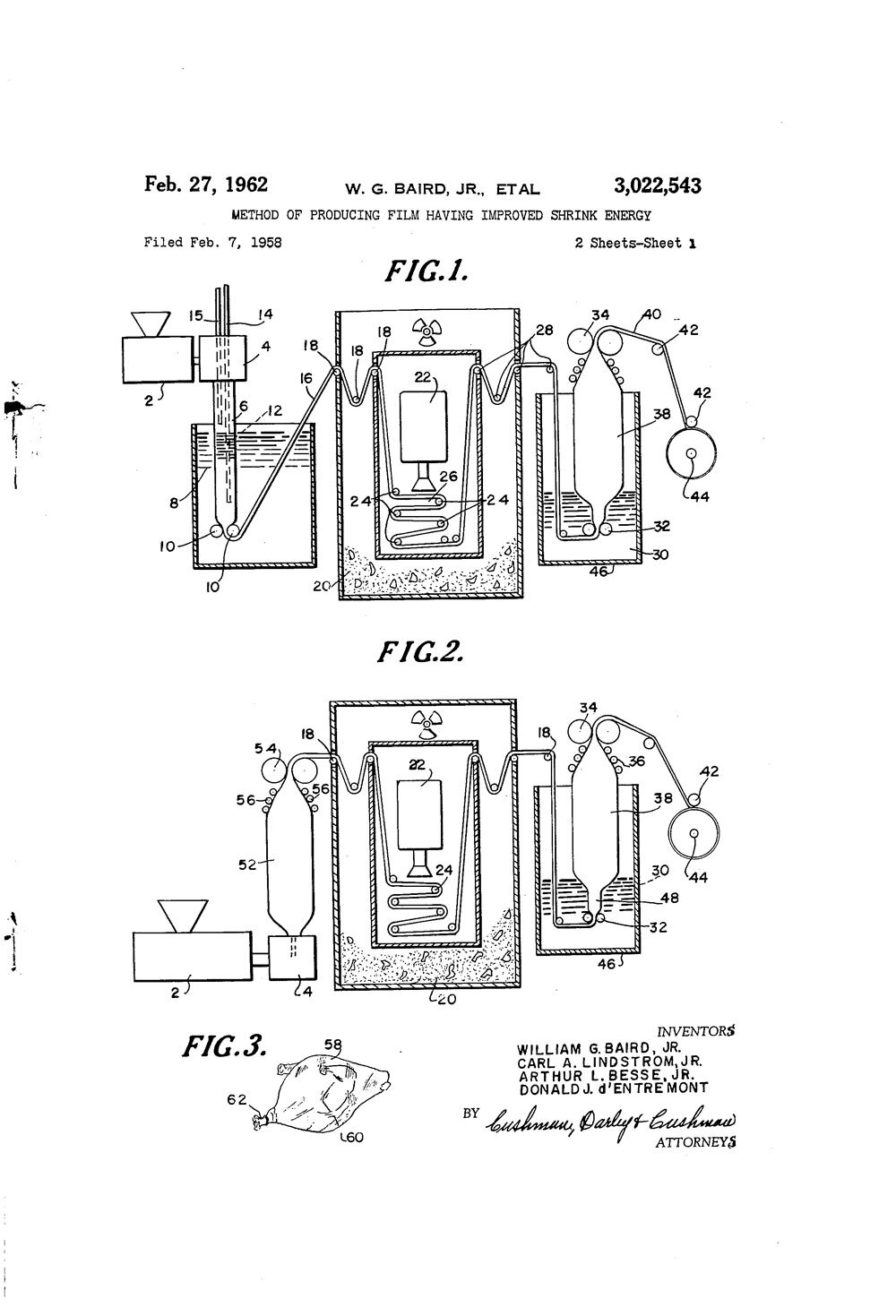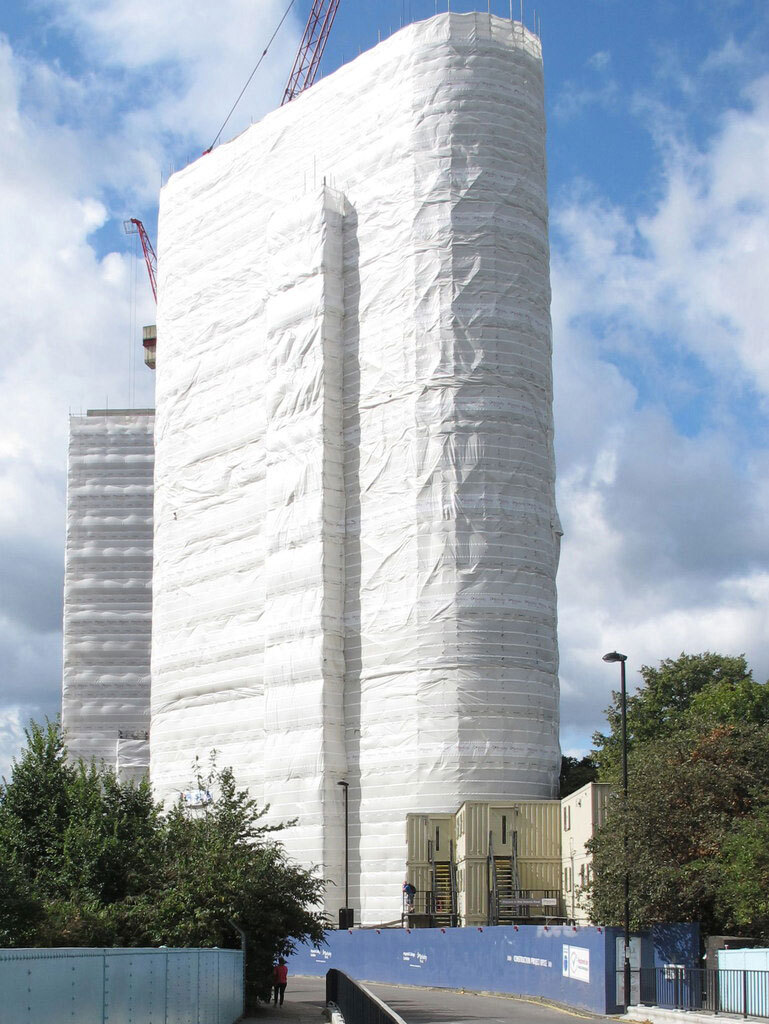Today in Tedium: You know something you probably don’t think about too much when you walk into a store, but it’s honestly everywhere you look, most likely? At one level, it’s plastic. But let’s narrow our gaze to a more specific type of plastic—the shrink-wrap that covers many basic goods that we purchase on a daily basis. It’s a sign that the thing you’re looking at hasn’t been tampered with, is original, and is otherwise good to use. It’s a common, if poorly understood, object in our lives and a key element of ASMR videos that you’ve probably spent an afternoon watching when you were bored. So how’d we get it? Today’s Tedium wraps its head around shrink-wrap. — Ernie @ Tedium
Today’s GIF features an image of someone shrink-wrapping their sneaker, which is something sneakerheads apparently do.
Keep Us Moving! Tedium takes a lot of time to work on and snark wise about. If you want to help us out, we have a Patreon page where you can donate. Keep the issues coming!
We accept advertising, too! Check out this page to learn more.
1933
The year that Ralph Wiley, a Dow Chemical employee, accidentally discovered polyvinylidene chloride, a type of plastic that found common use in wraps, particularly Saran Wrap, starting in the 1950s. The high quality of the material, initially developed as a a spray, made it desirable as a food wrap, because of its ability to hold in odors, survive microwaving, and cling to itself. Despite the success of this material, current owner SC Johnson eventually reformulated the PVDC out of Saran Wrap as a result of outcry from environmentalists.

Understanding the power of shrink-wrap and other forms of sealed plastic
About a month ago, I came across an interesting video done by the folks at Lifehacker. Here’s the basic gist: A pair of video creators saw a TikTok clip in which someone took a plastic bag, of the kind you might store snacks in, and cut it in half with a red-hot knife, and that knife was hot enough that it split the plastic bag in two—and both ends remained sealed.
They tried the trick themselves, and they found out that it not only worked, but it worked really well.
In many ways, shrink-wrap borrows from a similar, if not the same, concept. At high temperatures, plastic tends to firm up and tighten up thanks to the heat, rejiggering the molecules into a new shape. It will reshape itself around the material, creating a tight fit around what might have previously been a loose one.
Ziploc bags and their generic counterparts tend to be made up of a variant of plastic that’s also used in many forms of shrink-wrap, polyethylene—and heat (ofter in the form of a heat sealer) is often a key tool used in the creation of those products. So it makes sense that the material created a similar effect with plastic baggies.
Plastic and heat have something of a close relationship. Plastic wouldn’t look like it does today without a little heat to help mold it and a little chill to harden it. And shrink-wrap is a great example of how plastic can reach its full potential when heated.
Of course, shrink-wrap, no matter your views on plastic, is a fascinating concept, an example of innovations in the fields of chemistry, manufacturing, engineering, and physics coming together to help solve one of packaging’s great challenges—how can packages be properly and securely sealed before reaching consumers? The story is more complicated and interesting than it sounds.
It starts with birds wrapped in bags, and it has more in common with the Large Hadron Collider than you might think.
1957
The year that Raychem, a company that specialized in the creation of heat-shrink tubing for electrical wiring, was first founded. The technique used to build heat-shrink involved the use of a radiation treatment on the plastic. This type of tubing is often quite useful when repairing wires, because it helps to secure handmade wiring work with a little heat that secures the changes while hiding the exposed wires. Hackaday has a great piece on the concept and its inventor, Paul Cook (who died last year).

The Butterball turkey, and others like it, was an important test case for shrink-wrap. (pinkmoose/Flickr)
Birds wrapped in bags: How frozen turkeys helped get us shrink-wrap
So to start with, let’s talk about the birds wrapped in bags. In the late 1930s and early 1940s, a technique called cry-o-vac emerged as a way to vacuum seal turkeys and chickens inside of bags. The approach worked like this: A plastic film was wrapped around a whole bird, and then vacuum sealed. The packaged poultry was frozen and then put through a number of heat and cooling cycles, which caused the wrapping to firm up around the packaging, making it possible for the birds to be preserved for longer periods, while keeping the flavoring strong.
While not exactly shrink-wrapping it as we know it, this technique formed the basis of a startup firm, called Cryovac, Inc., in 1946. (The term was first trademarked in 1939, however, and newspaper ads and mentions date its existence well before the formation of the actual company.) A division of the Dewey & Almy Chemical Company, the firm emerged as something of an innovator in food packaging, though it has generally remained a subsidiary of a larger company throughout its history, with the company offered the room to come up with new techniques.
The process of heating and chilling the plastic in this way was a big innovation, but there were more directions to take it. One of those directions involved coming up with a method to destabilize the plastic molecules so that they were basically primed for wrapping around an object. And much like magnets next to an old CRT, it involved messing around with an electron gun.
This gets us to the comparison to the Large Hadron Collider. See, at its root, the CERN device is a particle collider, the world’s largest, in fact. A particle collider is just one type of particle accelerator, but there are numerous others that are nowhere near as large.
And some of those particle accelerators are used to create shrink-wrap. In the 1950s, it was discovered that treating plastic with electromagnetic waves, also known as ionizing radiation, had the effect of shaking up the molecules, so that with a little heat, the plastic would become malleable, rather than something that would be likely to melt.
This process was first applied to bags for turkeys, but then to everything else.
Heat shrink, which I mentioned above, uses basically the same technique, and offers a great example of what shrink-wrap and similar materials are capable of. In the clip above, a person uses a lighter to heat up heat shrink to fuse it to the cable, effectively shrink-wrapping a cable in what would otherwise be a sensitive spot.
In fact, it should be noted that Cryovac’s Bill Baird, who helped develop the shrink-wrap technology for the firm, actually met with Raychem founder Paul Cook, the inventor of heat shrink, to see if there were any lessons that could be gained. Turned out, there was. Not long after this meeting, which could potentially be described as the plastics version of Steve Jobs visiting Xerox PARC, Baird applied the concepts of irradiated polyethylene to turkey bags. And it turned out, it worked!

Just shooting plastic with an electron gun to make it shrink better on my turkeys, nbd. (Google Patents)
In a 1962 patent granted to W.R. Grace and Co., the firm that purchased Cryovac in 1954, the authors (including Baird) made it clear the challenges they were having in getting polyethylene to shrink using the traditional freeze-heat-chill method:
Polyethylene is finding increasing usage as a packaging material. However, due to the fact that regular polyethylene does not have high shrink energy, it cannot be utilized satisfactorily in a process such as the Cryovac process wherein a piece of meat, for example, is placed in a bag formed of heat-shrinkable plastic film, the bag evacuated, sealed and heated by contact with hot air or contact with hot water or other fluid to shrink the bag about the meat to eliminate dead spaces between the meat and the bag to increase preserving qualities and also eliminate wrinkles of the film and improve overall appearance of the package.
But by putting it in a machine with a particle accelerator slamming the polyethylene with electrons, the material quality of the plastic had changed significantly, making the plastic far more malleable.
“While irradiated polyethylene, e.g., lrrathene, is normally considered harder to seal than regular polyethylene, the polyethylene of the present invention seals more easily than conventional polyethylene,” the patent continues. “The products of the present invent on have improved hot cohesive seal strength which makes them particularly useful in applications requiring high speed heat sealing.”
In other words, they just found a way to make turkey packaging awesome. It made the plastic not only more malleable but also meant it could be thinner than heat-shrink plastic could be previously.
“It was really a major packaging innovation. Without, the industry would not have been able to grow at the rate it did,” explained Dan Blackshear, a longtime turkey-industry executive, in an Associated Press report.
And it wouldn’t be long before the destabilizing influence of electrons on polyethylene was applied to pretty much any consumer good you can think of.
“Sous-vide is just as much about the science as it is the art.”
— Bruno Goussault, The inventor of the sous-vide cooking technique, in a 2013 interview for Prepared Foods. Goussault who first developed the plastic-plus-warm-water technique in 1971, later adapted his understanding of the technique to the Culinary Research and Education Academy, which helps to evolve the sous-vide technique for modern chefs. (Another term for sous-vide, by the way, is “cryovacking,” in case you were wondering how related the concept actually was to frozen birds in bags.)

A high-rise building’s scaffolding shrink-wrapped during the construction process. (via Geograph)
Five ways that shrink-wrap has traditionally (or nontraditionally) been used
- In packaging perishable foods. While somewhat controversial today because of the perceived effects that plastic may have on foodstuff, shrink-wrap made it possible to pre-package items like fruits and raw meat so that they could store better and better withstand the elements. While the technology started with whole turkeys, it did not end there.
- In packaging vinyl records. One of the first industries to leverage shrink-wrapping outside of food was the record industry, which saw the technology as a way to highlight a lack of evidence of tampering. (As we highlighted a few years ago with the saga of the longbox.) Issues of Billboard from the early ’60s highlighted how Cryovac’s technology—specifically a form called Y-film, which was pitched specifically to the record industry—could be adapted to record packaging.
- In shipping large, unwieldy items. While lots of things may come in boxes that can be easily stored, sometimes that approach does not make a lot of sense for larger objects that shippers want to hold together, or that might be an unusual shape. (Think furniture that comes shipped in pre-assembled form, for example.) By wrapping up the packaging in a massive strip of shrink-wrap, it tends to be more cost-effective and safer than other means. (Occasionally, unboxing events might involve this larger kind of shrink-wrap; late last month, for example, iJustine unboxed a 50-inch Microsoft Surface Hub that was wrapped in shrink-wrap.)
- In disaster relief efforts. As you might have guessed by the fact that shrink-wrap is used for stuff like shipping large items, shrink-wrap can go really big. How big, you ask? Well, one common use case for shrink-wrap is after major natural disasters, during situations where it’s used as a form of temporary roofing, say after a flood or hurricane. “For a while, I was getting nowhere with the insurance companies,” said Anthony Seraphin, the founder of a firm called Global Wrap and Services, on the use of shrink-wrap as a way to minimize damage after hurricanes, in a 1994 New York Times article. “But now, several are talking like they are real interested.”
- In storing large, unwieldy machinery, like boats. Obviously, boats often don’t get used all year round, and it may be difficult to store a boat inside during the winter months. But wrapping that boat in shrink-wrap (particularly colored shrink-wrap, so folks can’t see inside of the boat and it’s protected from sunlight) could prove a useful way to protect the equipment from the elements. Boats aren’t the only example of this—farming equipment is also a good candidate for off-season shrink-wrapping.
2019
The year Samsung announced it would cut most non-biopolymer plastics from its packaging materials, instead using things like paper instead. “We are committed to recycling resources and minimizing pollution coming from our products,” said the company’s Gyeong-bin Jeon, who heads Samsung’s Global Customer Satisfaction Center. “We will adopt more environmentally sustainable materials even if it means an increase in cost.” Goodbye shrink-wrap.
In the modern day, shrink-wrap is often treated as a sign of authenticity for consumer goods. For one thing, you can make the presumption that it’s never been opened—which is a good thing if, for example, you’re a collector and you want to make sure you have something authentic.
But as I highlighted above, it’s possible for literally anyone with the right material and, say, a hair dryer, to properly do it. It’s kind of a red herring, something that can be easily faked with equipment that can easily be purchased on Amazon or elsewhere.
To give you an idea, here’s a video of someone shrink-wrapping an iPad. In the example shown, the person is using a manual process to do the heat-shrinking, wrapping the box in plastic, then taking a heat gun to the box and firming up the seal. While there is a bunch of extra plastic left on the sides before the heat-shrinking begins, by the end, it looks not unlike something you might find in a store.
It does not take a lot to make shrink-wrapping look like a professional job, which is bad news for collectors.
Last year, the collector site RecordMecca highlighted the way that sites like eBay often create motivations for sellers to fake materials such as these to raise the resale value of an already rare item. Writer Jeff Gold says that many even go to the point of building elaborate “hype stickers” to suggest that something is even more rare than it actually is:
For the past few years, a number of sellers on Ebay have been getting very high prices for a seemingly unending supply of ‘sealed’ albums with ‘rare hype stickers’. Sometimes these stickers are ‘previously unknown’. There’s a good reason for that–it’s because the vast majority are fake.
It’s not that difficult to find a clean copy of a scarce album to reseal. Then with a scanner and desktop printer, it’s easy to either reproduce a rare sticker, or with a modicum of design talent, create your own ‘previously unknown’ sticker. And that’s exactly what is happening, on a relatively large scale. Every week I see lots of resealed albums with fake stickers selling on EBay, and shake my head at the poor people who are getting taken.
Which is to say, shrink-wrap probably doesn’t deserve its reputation as a sign of authenticity or newness, but it nonetheless has it anyway. And given the environmental concerns that come with shrink-wrapping stuff, perhaps it might be useful for shrink-wrap to lose that reputation.
Whatever the case, shrink-wrap is going to be with us for a long time, as a way for sneaker-heads to ensure random people don’t put their feet into their valuable kicks, or as a way to ensure your checked luggage isn’t tampered with.
And unboxing videos. Can’t forget those.
--
Find this one an interesting read? Share it with a pal!





